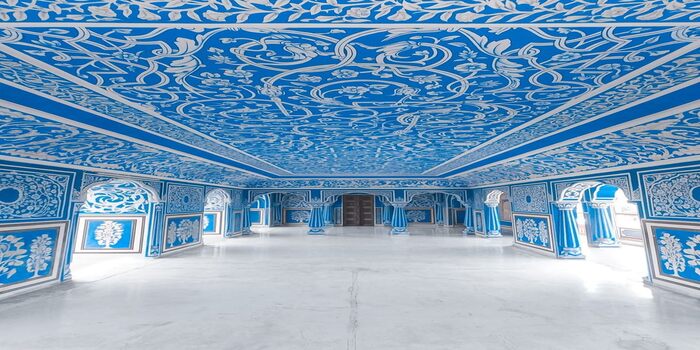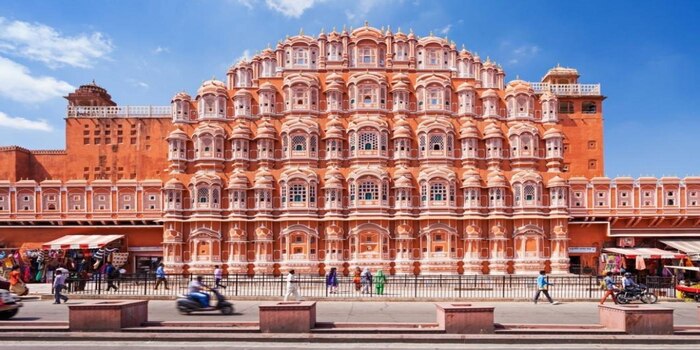A Comprehensive Guide To City Palace Of Jaipur
Feb 24, 2024 By Juliana Daniel
Advertisement
One of the most extraordinary examples of Jaipur's architectural genius is the City Palace. In the eighteenth century, a regal palace was constructed by Maharaja Singh II, who ruled Amber as the Rajput king. The palace's unique features, which include its grand pillars, inlaid ornamentations, jali work or latticework, and carved marble inner architecture, give it a lovely aspect and make it a sight to behold for guests.
This city's most beloved attraction is the City Palace. The Palace has two primary entrances: Jaleb Chowk and Tripolia Gate. Vidyadar Bhattacharya or Sir Samuel Jacob Swinton skillfully combined the Palace's Rajput, European, and Mughal architectural elements.
Are you planning to visit the city palace of Jaipur to witness an architectural marvel In the pink city? If yes, then you are in the right spot. This article will be helpful to you in learning everything about the city palace of Jaipur.
Here Are Some Of The Crucial Attractions In The City Palace Of Jaipur
Chandra Mahal

The (Moon Palace) chandra mahal is situated in the center of the structure. Royals inhabit it. The Palace offers a stunning sight of the gardens and the city. The 4th floor of Chandra Mahal is Shobha Nivas' or "Hall of the Beauty," which has gorgeous blue tiled and mica decorations and walls with a mirror-like appearance. The current Maharaja occupies the Nivas Shobha or Sukh Nivas.
Diwan-i-Galleria
The Palace Complex is home to a well-known museum. The art gallery is located in what used to be Diwan-i-am (Public Hall for Audience). The collection of carpets, artwork, 15th-century weapons, Sanganeri block prints, Kashmiri Pashmina shawls, Benares silk saris, and folk embroidery is extensive in the museum.
Chhavi Nivas:

Hall of Images, or Chhavi Nivas, is located on the fifth floor of Chandra Mahal. Observing this part of the complex during the rainy season is a treat. The white walls and blue floor accentuate the complex's splendor. In addition, the complex's sixth story, with its lines of two columns and a mirrored ceiling, is a must-see attraction. The gorgeous sight of the hilly landscape is available from this location.
Mukut Mahal
'Crown Building' or 'Mukut Mahal' is the head floor. "Badal Mahal" is located across from Chandra Mahal, which has the Govind Devji Church and a lovely fountain system situated in between.
Mubarak Mahal
It was previously used as the welcoming party for guests and dignitaries, currently known as the reception Palace. Maharaja Singh Madho constructed This construction in the nineteenth century due to its striking characteristics, which include a massive brass door on either side of the entrance and a magnificently carved marble gate.
Hawa Mahal's

It is a palace symbolizing the Hindu deity Krishna's crown. The tiny filigree windows were initially designed so females may see without being noticed by peering onto the street below. The Hawa Mahal's filigree windows, made of pink and red sandstone, are sometimes likened to a beehive because the small portions connect to create something bigger and more exquisite. Among the most well-known landmarks in Jaipur City is this Palace.
The Grandeur Of Amber Fort
Admire the magnificence of Amber Fort, the city's most magnificent sights. It is well-known for its elaborate pink city place architecture, regal past, and expansive city vistas. It's a joy to visit the fort after sunset, and do not miss the spectacular light and sound here. Here, Nahargarh Fort also serves as a must-see, particularly around sunset.
Fascinating Information About Jaipur City Place?
The City Palace in Jaipur is a historical and cultural treasure trove made more alluring by a wealth of fascinating information. The following are some fantastic details of Jaipur City Palace:
- Manufacture By The Maharaja Sawai Singh II: The stunning Palace was manufactured in 1729 by the Maharaja Sawai, the creator of Jaipur and a remarkable ruler and astronomer. It works as the regal administrative and residence heart of a city.
- Combination Of Architectural Technique: The Palace shows the extraordinary blend of Rajput or Mughal architectural features, back to the cultural combination during manufacturing.
- Chandra Mahal 7 story: is the leading construction inside the Palace and has seven grounds. During the regal era, every floor had a unique name and purpose.
- Royal Residence: A crucial part of a palace's structure is accessible to the general public as heritage sites and museums. The royal family's descendants live in various parts of Chandra Mahal.
- Peacock Gate: A Pritam Chowk Niwas, or within the courtyard, attributes four attractively painted doors, each signifying a distinct season. Known for its complex design, Peacock Gate is a famous gate that symbolizes fall.
- Mubarak Textile Museum: the Mubarak Mahal is a section of a City Palace and is home to a magnificent group of royal fabrics, clothes, and textiles on display at the textile museum. It provides information about the Maharajas' dress and style.
- Public and Governance Interaction: The Maharaja held talks with the public in Diwan I Aam ( Public Hall for Audience) or private sessions with advisors in Diwan I Khas ( Private Audience Hall) within the palace complex.
- Astronomical Observatory: The adjacent Jantar Mantar, an astronomical structure constructed by Sawai Maharaja Singh II and recognized as a UNESCO Heritage World Site, is not a city palace component. For accurate measurements, it has a variety of astronomical instruments.
- Cultural Events: Cultural events, such as dance performances and traditional music, are held at City Palace, allowing guests to engage with Rajasthan's rich cultural heritage.
- Film Location: With its luxury and stunning architecture, the Palace has provided a background for numerous international film and Bollywood productions.
- Historical Artifacts: An insight into the regal lifestyle is offered by the vast array of historical objects housed within the palace complex, which include paintings, swords, manuscripts, and monarchical regalia.
- Religious Significance: Devotees consider a Govind Dev church, housed within the royal complex, a significant place of worship devoted to Lord Krishna.
Conclusion
Remember that the Palace of the City is an actual royal residence and a historical landmark. Be aware of locations that might be off-limits to visitors since the royal family uses them privately. Make visiting City Palace in Jaipur enjoyable and polite by heeding these guidelines.
This article covers the exciting things about visit the city palace of Jaipur to witness an architectural marvel in the pink city!
Advertisement
-
![]() Attractions
AttractionsExplore Kashmir's Stunning Scenery and Hidden Gems
Juliana Daniel Jan 10, 2024
-
![]() Travel Tips
Travel Tips6 Dutch Traditions Every Traveler should know
Sean William Feb 25, 2024
-
![]() Travel Tips
Travel TipsHow to Spend 10 Days in Italy: The Ultimate Itinerary Guide for Every Interest
Sean William Jan 26, 2024
-
![]() Travel Tips
Travel TipsYour Comprehensive Guide To Pura Sakenan
Juliana Daniel Nov 22, 2023
-
![]() Destinations
DestinationsTop 8 Most Exciting Festivals and Events in India You Can Participate in 2024
Sean William Dec 26, 2023
-
![]() Travel Tips
Travel TipsGuidelines You Should Be Familiar With While Visiting Raja's Seat, Coorg
Sean William Oct 05, 2023
-
![]() Attractions
Attractions6 of Chennai's Charms - A Journey Through Culture and Tranquility
Juliana Daniel Jan 21, 2024
-
![]() Travel Tips
Travel TipsThe Most Fun Things for Families to Do in The Austrian Mountains
Sean William Dec 07, 2023







